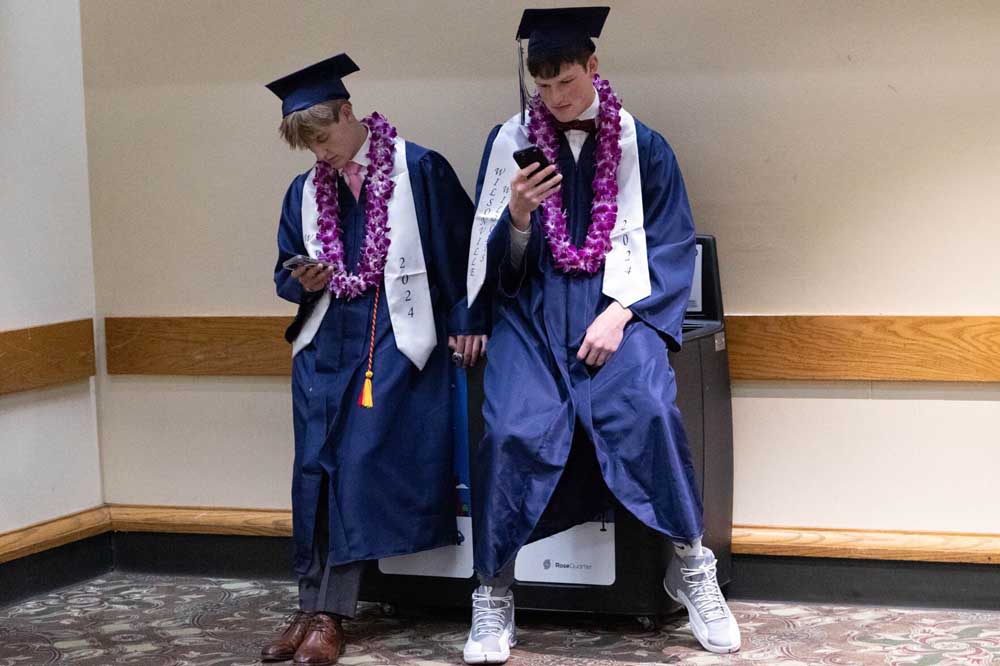Oregon Department of Education establishes guidance on classroom cell phone policy
Published 2:38 pm Wednesday, October 30, 2024

- Jack Miller, left, Kyle Counts pass time by looking at their cell phones before Wilsonville High School’s graduation at Veterans Memorial Coliseum.
For some students, the beginning of the 2024-25 school year was their first without cell phones.
Trending
Although many middle and high school students were used to the familiar refrain of “off and away” during class, more and more school districts are enforcing school board-approved cell phone policies, with some going so far as partnering with brands like Yondr to physically limit students’ ability to scroll during class time.
On Wednesday, Oct. 30, the Oregon Department of Education released official statewide cell phone policy guidance, even though each of Oregon’s 197 school districts establishes their own personal electronic device and cell phone policies.
The 28-page document is based on recent research about the serious mental health impacts and risks that cell phone and social media use can have on adolescents and young people. The guidance also notes how cell phone presence in schools is overwhelmingly negative on student performance and engagement.
Trending
“We will be challenged to help students achieve their educational goals, like reading and math skills, if students aren’t focused on learning when they’re in school. Cell phones are a distraction and can harm students’ mental health and well-being if used inappropriately,” Gov. Tina Kotek said in a press release. “Our job as leaders is to add as many supports as we can to help students and educators be successful. Toward that goal, ODE’s guidance includes clear model policies for cell phone use in schools.”
School districts are already required to approve personal electronic device policies. However, this doesn’t necessarily mean that existing policies limit students’ access to their smartphones during school hours.
The state guidelines direct districts to “incorporate staff, student, and community input at every stage,” address liability and “consider how the policy will be enforced so students do not lose instructional time” — specifically by finding alternatives to suspension and expulsion as disciplinary responses to cell phones.
“This widespread use and risk of cell phones among students across Oregon creates a need for effective, equitable, and sustainable cell phone policies in schools,” ODE said in the press release.
The ODE report notes that many states, including Oregon’s southern neighbor California, have passed legislation limiting or restricting cell phones in public schools.
“We know that cell phones can offer benefits to students including those who may have health and safety concerns, or where students with disabilities require assistive technologies for additional support,” ODE director Charlene Williams said in the press release. “At the same time it is important for schools to work purposefully to create conditions that promote deep thinking and sustained attention, free from the constant interruptions that cell phones and mobile devices can introduce.”
To read the guidance report visit: https://content.govdelivery.com/accounts/ORED/bulletins/3bf1722.







